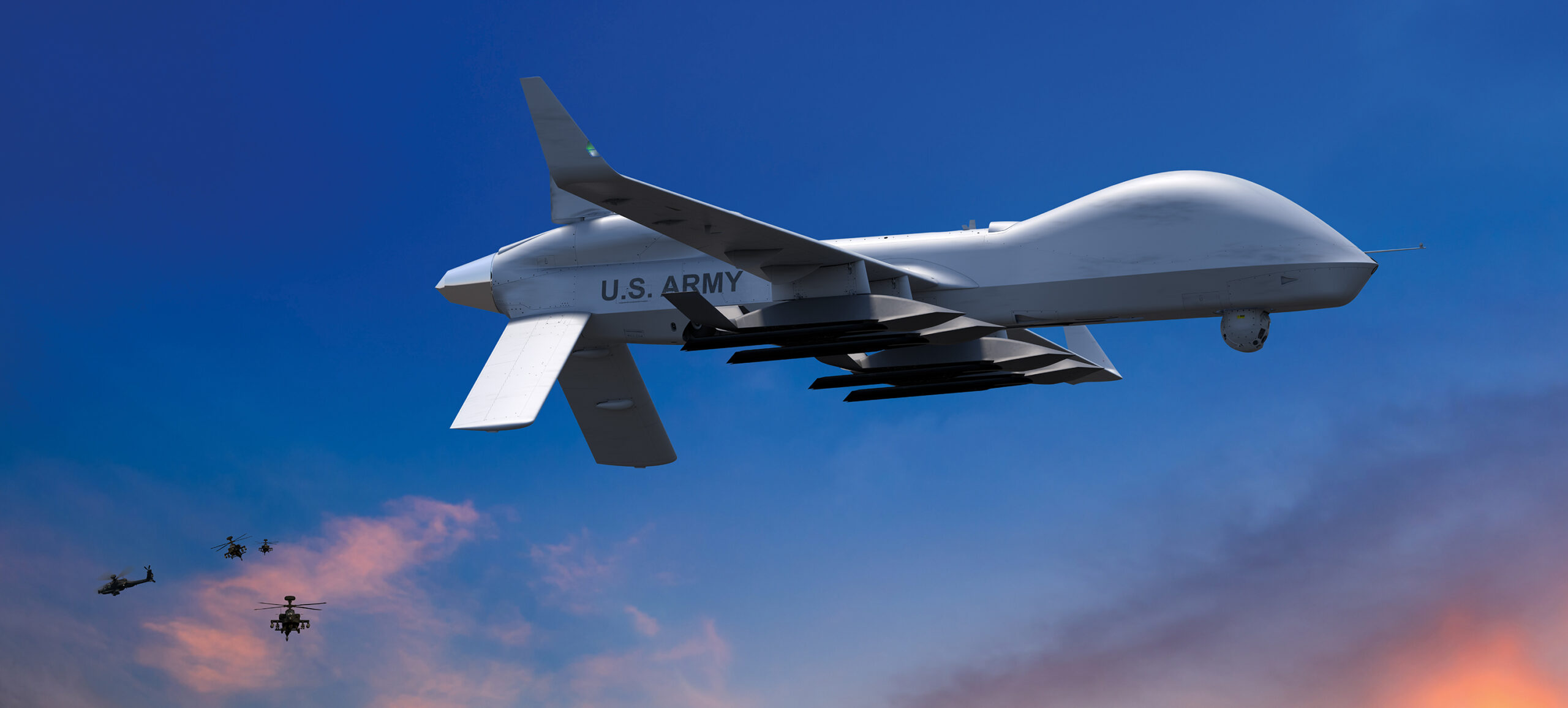The U.S. Army’s ambition to reshape its forces for the 21st century hinges on one invaluable commodity: insight.
The service’s planned evolution into multi-domain operations calls for the right forces, in the right places, poised to keep contact with adversaries in virtually all circumstances and, if needed, strike and win.
Underpinning all the technological work required to get there is, above all, the need to know – where the adversaries are, in what strength, with what intentions, requiring what response, in concert with which other forces, in what domains, and what other allies, and so on. None of the Army’s forthcoming new weapons, formations or doctrines are much use without knowing where they need to be and when they need to act.
That’s why the Army’s remotely piloted MQ-1C Gray Eagle is, and will remain, the linchpin for multi-domain operations. The aircraft’s builder, General Atomics Aeronautical Systems, Inc., led the way in the development of these systems and it’s continuing to blaze the path today, in step with the Army, to expand what’s possible.
Multi-domain operations are about so much but they start with the key ideas, as described in a paper released by Chief of Staff Gen. James McConville, of “extending land-based effects into other domains” and “providing a suite of tools to integrate” joint fires from the onset.
A battery of artillery on land, however, must be able to see and track a target out in the ocean, for example, and spot the fall of shot. A flight of attack helicopters must be confident that hostile anti-air systems have been neutralized before they can safely prosecute enemy targets in contested areas.
This not only requires high-quality intelligence, surveillance and reconnaissance, in many cases it requires the ability for that same ISR platform to be able to take action quickly if needed, and in concert with the balance of the joint force whether on land, at sea, in the air, or in space.
With its high endurance, proven record, versatile payloads, and the prospect for additional upgrades both to aircraft equipment and its onboard software or other systems, the Gray Eagle is in the ideal position to serve as the pivot point for the Army’s new approach.
The Gray Eagle can stay aloft for many hours, providing high-quality ISR to commanders at all echelons, as well as intelligence, policy and other consumers further afield. Its team of pilots and sensor operators fly the aircraft from hundreds or thousands of miles away, keeping them safe from enemy action.
All that is well established. In fact, the Army’s fleet of Gray Eagles already has flown more than 1 million hours, with more than 80 percent of that in support of deployed operations.
The aircraft itself, however, isn’t the same – it has continued to add capability over time. Its range and time on station are greater. It is accessible to maneuver force- and battlefield-level operators, including via manned-unmanned teaming with the AH-64 Apache attack helicopter. And that access is greater than ever. A Joint Terminal Attack Controller on the ground can take control from a smartphone. The library of payloads continues to evolve as well.
Not only will new communications networks, sensors and weapons fly on the Gray Eagle, it’s also on the leading edge of a new revolution in small unmanned aerial systems, which will bring a quantum leap in how these aircraft can contribute to the fight. Picture a Gray Eagle releasing a small aircraft that would stand in against hostile anti-aircraft systems and take them offline with an electronic warfare attack, or decoy them to clear the way for action by other U.S. or allied units.
The basic aircraft also is ready to be improved to better support the Army’s concepts for MDO.
New dual 7.5 kW brushless generators will provide much greater onboard power for sensing, processing, communicating or other needs. Greater power specifically unlocks the ability to support the Multi-Domain Sensing System, which provides long-range sensing and targeting for the Army’s Long-Range Precision Fires and Future Vertical Lift ecosystems – two keys to McConville’s foundation stone and two major priorities for the force.
The Grey Eagle also is ready to take aboard a more powerful, more reliable, new heavy-fuel engine, which will increase the aircraft’s speed and persistence to keep it in the fight along with the Army’s pending mix of current and new battlefield systems.
The Gray Eagle’s heavy-fuel engine has long aligned it so closely with Army units on the move: The aircraft can take advantage of the same fuel logistics tail that follows ground-based maneuver forces, simplifying operations and sustainment all up the line back to home station. The new powerplant will improve speed and reliability.
Just as significant, however, are the upgrades to the Gray Eagle’s onboard datalinks, avionics and software, which will enable soldiers to plug-and-play virtually anything they need to interface with the aircraft or operations it’s supporting. These modular, open-system architecture improvements make the Gray Eagle into a Swiss Army Knife for the near-future warfighter, ready to go anywhere and do anything the Army needs.
When Army leaders describe what they want out of future battlefield systems, they love to take out their mobile telephones and say “this” – stable hardware enabled by powerful software that makes it easy to upgrade, integrate accessories and accomplish their tasks. That’s what the new Gray Eagle will provide.
























